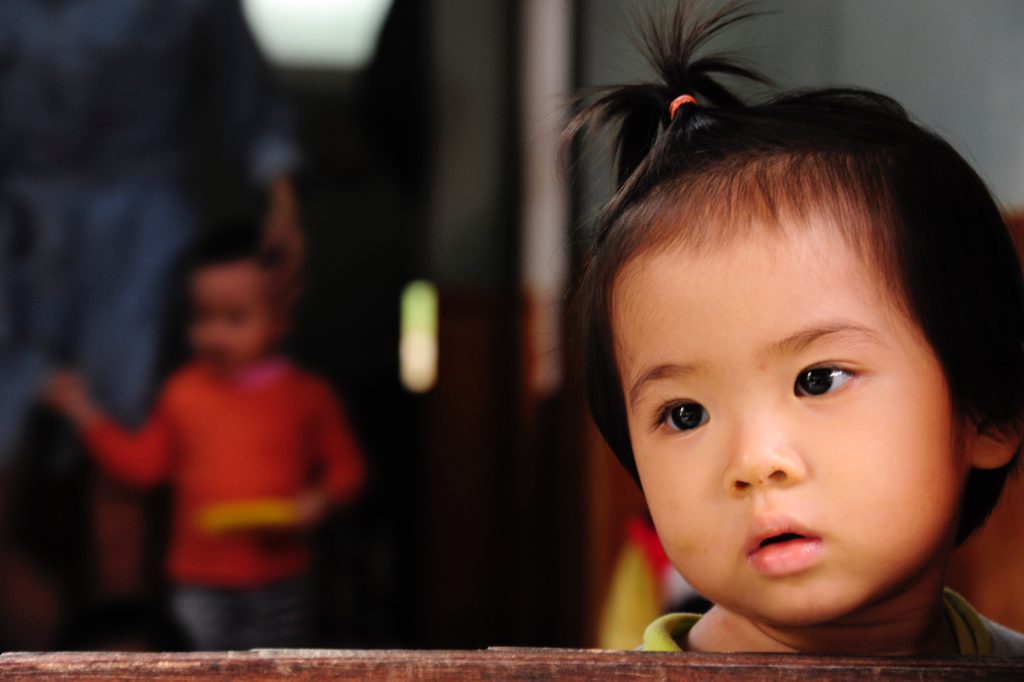Families with jobs and secure housing access child care through our country’s Child Care Resource & Referral network, friends and family and the internet. Without child care, families experiencing homelessness struggle to secure housing. And yet, for these families, accessing child care offers two important benefits—the chance to be able to participate in job training, education, and other programs essential to resolving their homelessness and the opportunity to have a safe setting for children to grow!
Research has established a strong connection between a young child’s early experiences and the development of his or her brain structure. According to the Center on the Developing Child at Harvard University, the early years of life when more than 1 million new neural connections form every second, can provide a strong or weak foundation for all future learning, behavior and health.[1] We know that homelessness jeopardizes the health, early childhood development and educational well-being of infants, toddlers and preschool-aged children. It also creates unique barriers to participating in early care and education. With nearly 50% of children living in federally-funded homeless shelters under the age of five, this is a problem for families, communities, states and the country.

The Child Care and Development Block Grant Act of 2014, signed into law on November 19, 2014, reauthorized the Child Care and Development Fund (CCDF) Program. The reauthorized law made significant advancements by defining health and safety requirements for child care providers, outlining family-friendly eligibility policies, and ensuring parents and the general public have transparent information about available child care choices.
The Administration for Children and Families (ACF) published the Final Rule to implement the Child Care and Development Fund program (CCDF) in September 2016. The full regulations may be read here.
The Rule included many items designed to remove barriers and better support young children and families experiencing homelessness. (CCDF Final Rule: Subsidy Eligibility and Homeless Provisions) It included:
- The McKinney-Vento Act’s education definition of homelessness to be used by child care (and Head Start and public education),
- A grace period or flexibility to obtain immunizations and other documents needed so that children experiencing homelessness can be served more quickly,
- Outreach to homeless families with children,
- Training and technical assistance in identifying and serving homeless children and their families,
- The coordination of services so that families with children can get the help that they need, and
- Data reporting to know how many families (and children) experiencing homelessness are receiving child care assistance.
States submitted 2016-2018 CCDF Plans and excerpts from Section 3.2.2., Improving Access to High Quality Child Care for Homeless Families, within State Plans were shared here. The state plans for 2016-2018 indicated that while many states had policies in place to help families experiencing homelessness access child care assistance, the majority of states were not yet adequately addressing those families’ unique needs.
The Child Care and Development Fund (CCDF) Plan serves as the application for the Child Care and Development Block Grant (CCDBG) funds by providing a description of, and assurance about, state child care programs and related services available to eligible families. The Office of Child Care reviews the Plans for approval.
The CCDF Plan also presents an opportunity for states to demonstrate the activities and services they are providing to meet the needs of low-income children and families. The Administration for Children and Families (ACF) makes Plans publicly available to many users including members of Congress, Congressional committees, State and local child care administrators, advocacy groups, researchers and the general public. For states looking for innovative ways to better meet the child care needs of families experiencing homelessness, the publication of the state plans serves as a clearinghouse of resources for states to replicate or customize to finetune their strategies to best support these families.
The 2019-2021 CCDF State Plans show that States have embraced the CCDF law and regulations with regard to serving families experiencing homelessness, making changes to policies and practice, including eligibility requirements, coordinating with partners, increasing access and providing professional development for those within the child care field to not only increase access to child care but also to ensure that families with children experiencing homelessness receive the support and services they need. These State Plans can be found here.
View other resources for early childhood homelessness here.
[1] Harvard University, Center on the Developing Child, Brain Architecture.



